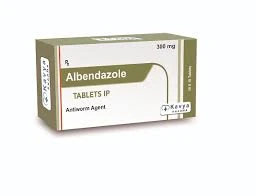- Afrikaans
- Albanian
- Amharic
- Arabic
- Armenian
- Azerbaijani
- Basque
- Belarusian
- Bengali
- Bosnian
- Bulgarian
- Catalan
- Cebuano
- Corsican
- Croatian
- Czech
- Danish
- Dutch
- English
- Esperanto
- Estonian
- Finnish
- French
- Frisian
- Galician
- Georgian
- German
- Greek
- Gujarati
- Haitian Creole
- hausa
- hawaiian
- Hebrew
- Hindi
- Miao
- Hungarian
- Icelandic
- igbo
- Indonesian
- irish
- Italian
- Japanese
- Javanese
- Kannada
- kazakh
- Khmer
- Rwandese
- Korean
- Kurdish
- Kyrgyz
- Lao
- Latin
- Latvian
- Lithuanian
- Luxembourgish
- Macedonian
- Malgashi
- Malay
- Malayalam
- Maltese
- Maori
- Marathi
- Mongolian
- Myanmar
- Nepali
- Norwegian
- Norwegian
- Occitan
- Pashto
- Persian
- Polish
- Portuguese
- Punjabi
- Romanian
- Russian
- Samoan
- Scottish Gaelic
- Serbian
- Sesotho
- Shona
- Sindhi
- Sinhala
- Slovak
- Slovenian
- Somali
- Spanish
- Sundanese
- Swahili
- Swedish
- Tagalog
- Tajik
- Tamil
- Tatar
- Telugu
- Thai
- Turkish
- Turkmen
- Ukrainian
- Urdu
- Uighur
- Uzbek
- Vietnamese
- Welsh
- Bantu
- Yiddish
- Yoruba
- Zulu
Dec . 01, 2024 10:17 Back to list
albemed anthelmintic dosage
Understanding Albendazole Anthelmintic Dosage and Administration
Albendazole is a broad-spectrum anthelmintic medication widely used in the treatment of various parasitic worm infections. It belongs to the benzimidazole class of drugs and is effective against a range of helminths, including nematodes and cestodes. Understanding the appropriate dosage of albendazole is crucial for the effectiveness of treatment and minimizing potential side effects.
Mechanism of Action
Albendazole works by inhibiting the polymerization of tubulin in the parasites, which disrupts cellular function and leads to the depletion of energy stores. This mechanism makes it effective against a wide range of parasites, as it targets essential metabolic processes. Upon administration, albendazole is absorbed in the intestines and metabolized in the liver to its active form, albendazole sulfoxide, which has a longer half-life and contributes to its effectiveness.
Indications
Albendazole is indicated for the treatment of several parasitic infections, including but not limited to
- Ascariasis (caused by Ascaris lumbricoides) - Enterobiasis (pinworm infection) - Hookworm infections (Ancylostoma duodenale and Necator americanus) - Trichuriasis (whipworm infection) - Taeniasis (tapeworm infection)
Additionally, it is used for certain conditions caused by tissue-dwelling parasites, such as cysticercosis and echinococcosis.
Dosage Guidelines
The dosage of albendazole varies depending on the specific infection being treated, the patient's age, and body weight. Here are general dosage recommendations
albemed anthelmintic dosage

1. For intestinal nematodes Adults and children over 2 years of age typically receive a single dose of 400 mg. For other cases, a repeat dose may be administered two weeks later. 2. For echinococcosis The usual dosage is 10-15 mg/kg per day, divided into two doses. This treatment may continue for several weeks and requires monitoring for side effects.
3. For cysticercosis The recommended dosage is 400 mg twice daily for 8-30 days, depending on the severity of the infection.
4. For children Dosage is often based on body weight, typically calculated at 15 mg/kg. However, no single dose should exceed the adult limit.
Administration and Precautions
Albendazole is usually administered orally, with or without food; however, taking it with a fatty meal can increase its absorption. For optimal results, it is advisable to follow the healthcare provider’s instructions regarding dosage and treatment duration.
Side Effects
While albendazole is generally well tolerated, some patients may experience side effects. Common side effects include nausea, vomiting, abdominal pain, and headache. More severe adverse reactions are rare but can include liver function abnormalities or bone marrow suppression. Regular follow-up and blood tests may be required during extended treatment, especially in patients receiving high doses.
Conclusion
Albendazole is a crucial drug in the fight against parasitic infections, and understanding its dosage and administration is essential for effective treatment. Healthcare providers must assess each patient individually to optimize the use of this medication while minimizing risks. Patients are encouraged to adhere strictly to prescribed dosages and report any unusual symptoms to their healthcare provider for timely management. As research continues, albendazole remains a cornerstone in anthelmintic therapy, proving vital in global health initiatives against parasitic diseases.
-
Guide to Oxytetracycline Injection
NewsMar.27,2025
-
Guide to Colistin Sulphate
NewsMar.27,2025
-
Gentamicin Sulfate: Uses, Price, And Key Information
NewsMar.27,2025
-
Enrofloxacin Injection: Uses, Price, And Supplier Information
NewsMar.27,2025
-
Dexamethasone Sodium Phosphate Injection: Uses, Price, And Key Information
NewsMar.27,2025
-
Albendazole Tablet: Uses, Dosage, Cost, And Key Information
NewsMar.27,2025













